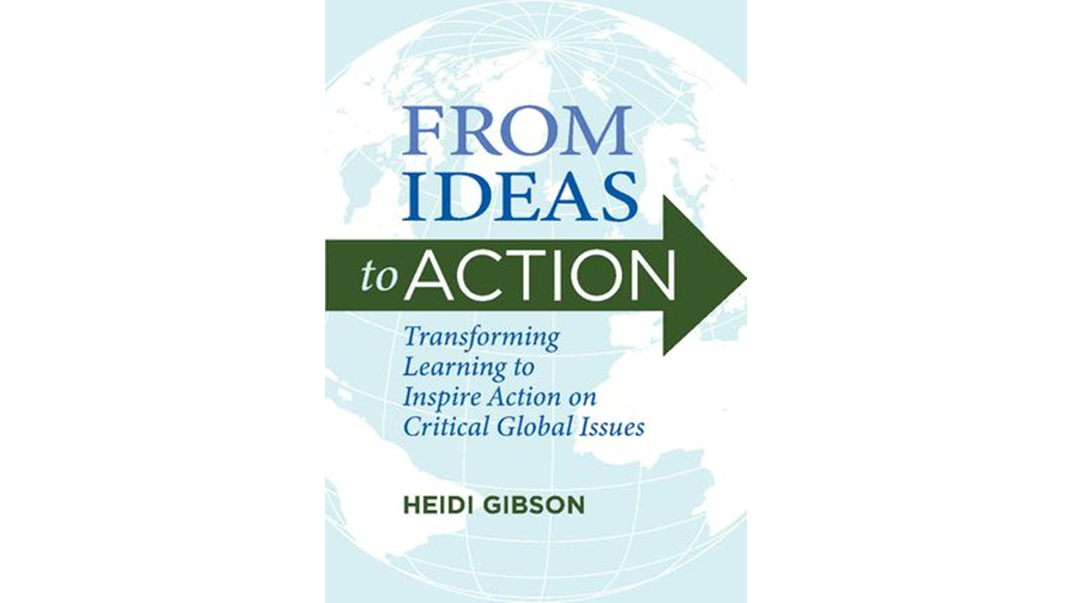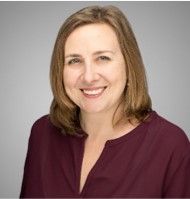Education to Create a Sustainable Future
When thinking about the ultimate goal of learning, a Smithsonian educator and researcher suggests that at the core of education, is a goal to create a better future for learners and for us all. Through her work, she maps the journey to help students develop the skills and knowledge needed to become active participants in creating a more sustainable world.
:focal(320x241:321x242)/https://tf-cmsv2-smithsonianmag-media.s3.amazonaws.com/filer_public/6a/9f/6a9f6b96-872c-431c-a549-4e0c28bc4c2a/imagining_a_perfect_community.jpg)
Our Shared Goal
Begin with the end in mind people say. Educators take this to heart when using methods like listing essential understandings and learning objectives to keep focused on their desired end for a class or unit. But take a step further back and you start to ask, what is the end we want for learning in general? My answer: education for a sustainable future - the goal of helping everyone to learn to create a better future for themselves and for us all.
Determining and creating a sustainable future is not the action of one person, it requires collaboration of people around the world. Just like sustainable solutions balance social, economic, environmental, and ethical perspectives, education for a sustainable future also balances these different needs. Of course, education fills an economic need, teaching young people needed skills to survive and thrive in a rapidly evolving economy. It can also fill an important social need, providing a forum for people to learn to communicate, build consensus, and collaborate on shared goals. Importantly, it can help satisfy the environmental need to teach respect and protection for our shared home, planet Earth. And always, if we want to create a better future, we must help young people to see the ethics in all things, to consider: what is right, what is fair, and what is the future we want?
Surveying the Terrain
Knowing where you want to go is one thing, knowing how to get there is quite another. What are the essential attributes that young people will need for the future and how do they develop them? As a Smithsonian Research Fellow in 2018, I took on the challenge of trying to answer those questions as part of the Smithsonian Science for Global Goals project. A few things became clear quickly as I worked with the Smithsonian Science Education Center (SSEC) team:
- Active, not passive: The future is uncertain and can be changed by the choices we make. Creating a shared sustainable future is not about passively implementing a pre-determined set of steps. It is an act of collective innovation. So rather than metaphorically learning their ABC’s, young people need to create a whole new alphabet. This means they must be given the opportunity to investigate the world around them, make decisions, and act upon their ideas. Taking action, reflecting, iterating, and acting again allows young people to build skills and confidence that encourages them to take on an active role in creating change in their local and global communities.
- “Yes, and…” not “either/or”: There are many disciplines, pedagogies, and people that must be involved in creating a sustainable future. Rather than pick one set of ideas and ignore all the others, drawing together a diverse set of thoughts and perspectives is the most likely way to find sustainable solutions. Thought areas such as inquiry-based science, civic education, youth participatory action research, place-based education, global citizenship, and many more allow for a wealth of innovative approaches. Using them in concert provides a full toolbox for educators and young people confronting the complexity of global challenges.
- Global Goals: A sustainable future involves everyone on the planet. Education with this aim must include as many people as possible, regardless of location, culture, ability, or identity. Young people need to feel a sense of global belonging and learn to focus on collaboration, not competition, with local and global peers. The United Nations’ Sustainable Development Goals are an excellent framework to help young people explore different aspects of a sustainable future.
Mapping the Learning Journey
Specific skills and attitudes guide youth to take an active, solutions-oriented approach to the problems they identify in the world around them. One outcome of my research was the creation of the Sustainability Mindsets, a tool to articulate these key ways of thinking and doing. The four mindsets are Empowerment and Agency, Open-mindedness and Reflection, Equity and Justice, and Global-Local Interconnection. Together these mindsets help us remember our goal to develop the skills and attitudes necessary for positive participation in creating our shared future.
/https://tf-cmsv2-smithsonianmag-media.s3.amazonaws.com/filer_public/70/43/70436434-558c-415e-b4d6-15fbb3a9ae9d/sustainablitymindsetsicons.jpg)
With these Sustainability Mindsets in mind and drawing together educational research and frameworks from many different thought areas, I led an effort to map the journey towards education for a sustainable future. This map, the Global Goals Action Progression, shows a process young people can follow to become active collaborators in creating a sustainable future.
/https://tf-cmsv2-smithsonianmag-media.s3.amazonaws.com/filer_public/37/29/37290b19-7c3e-4b49-86b5-a50ba47737c2/global_gap.png)
Young people begin with what they already know: how they learn best, their cultural context, and their background knowledge. By acknowledging the individuality and resources young people bring to learning, they enter the learning process from a position of strength and respect. They are then systematically guided to a place where they can take self-determined, informed actions.
First, they question and investigate their local and global communities. They make sense of what they find out using critical reasoning and systemic understanding. Then, they synthesize their ideas to propose solutions and build consensus. Finally, young people act by implementing their ideas and reflecting on their actions. Further details about this process and how it can help young people contribute to a sustainable future can be found in my recently published, freely available book, From Ideas to Actions: Transforming Learning to Inspire Action on Critical Global issues.

The Global Goals Action Progression could chart the course for any educator or student seeking to find a way to work towards a sustainable future. At the SSEC, we use it as a map to guide our Smithsonian Science for Global Goals project.
Taking the Journey
I am now a developer working on the Smithsonian Science for Global Goals project which aims to provide educators and young people with the resources needed to journey towards education for a sustainable future. Recognizing that educators need support, this series of guides provides opportunities to discover, understand, and act on a wide variety of global challenges related to topics such as COVID-19, food and nutrition, mosquito-borne diseases, sustainable communities, vaccines, biodiversity, and environmental justice. Through these guides, young people can go on their initial journeys and realize how significant their role can be. They start by questioning and end by becoming young changemakers, able to take informed actions to make their local and global communities more sustainable. Today’s young people will probably live the longest in the shared future we are all creating, let’s give them the opportunity to help create the future they want.
